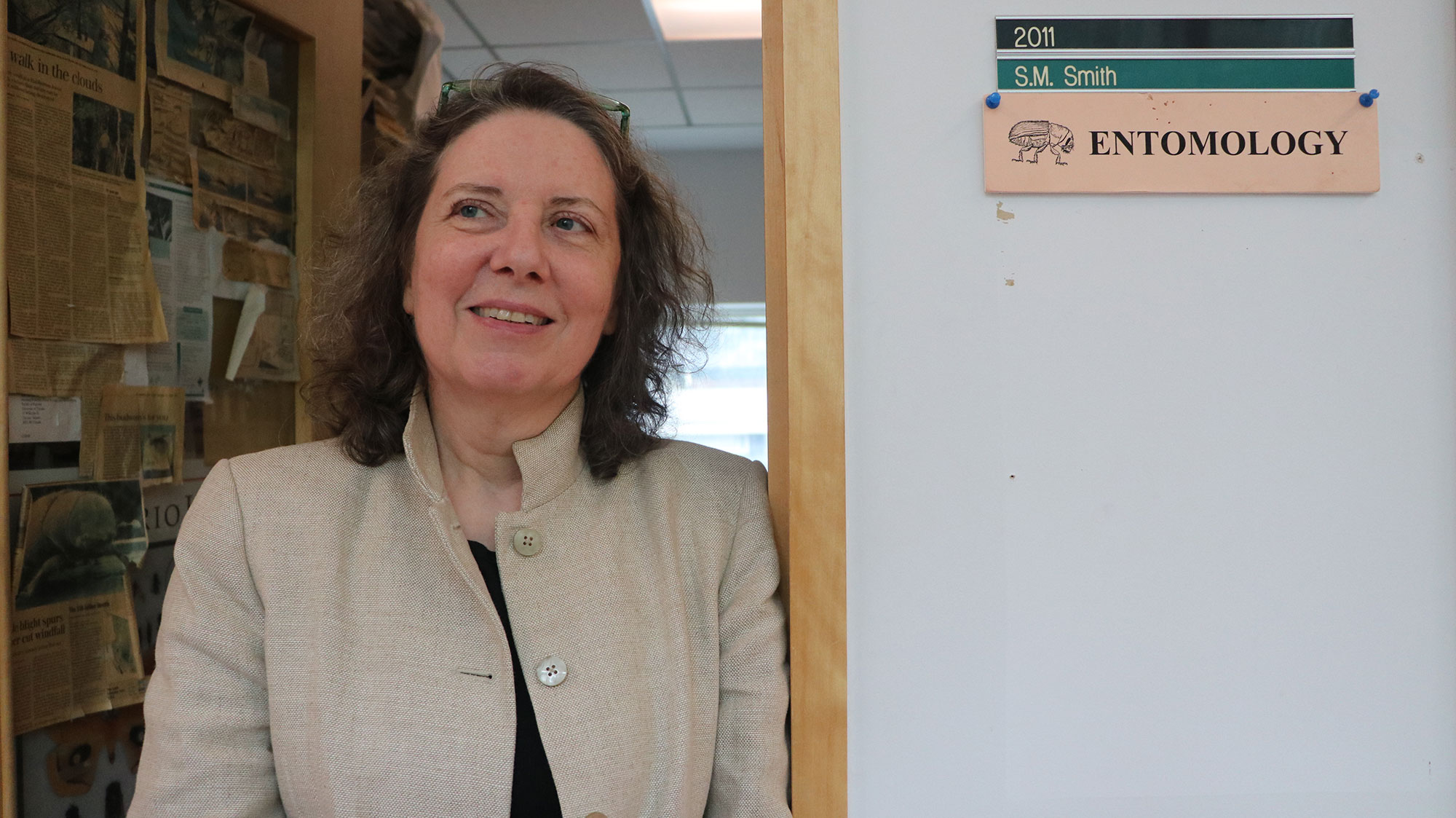
08.09.19 - A Q&A with Sandy Smith, director of the Daniels Faculty's forestry program
On July 1, the University of Toronto's former Faculty of Forestry became part of the John H. Daniels Faculty of Architecture, Landscape, and Design. Now, for the first time, the Daniels Faculty offers a professional graduate program in forest conservation. Students enrolled in forestry and other Daniels programs will have new opportunities to pursue cross-disciplinary research.
Professor Sandy Smith is the newly appointed director of the Daniels Faculty's forestry graduate programs. We spoke with her about what exactly goes on at the forestry department — and how it all might blend with the architecture and visual studies programs at Daniels.
How long have you been at the university?
I started here in January 1988, so it has been over 30 years, now. I was hired as an entomologist, as part of the faculty's accreditation process. Once I started teaching, I came to appreciate the breadth of knowledge professional foresters need to have in order to manage the forests of the province.
What's the focus of your research?
I work on what we call "biological control," which means using natural enemies to manage populations of insects. At first, I worked on controlling the spread of native invasive insects, like the spruce budworm. But, in the 1990s and 2000s, we started getting a lot more non-native invasive species, like pine shoot beetles, emerald ash borers, and Asian long-horned beetles.
One strategy for dealing with them is to go back to their countries of origin to find their natural enemies — parasites that live inside the bugs. We bring those very specialized parasites back here and establish them.
When the emerald ash borer arrived here from Asia, for example, it was home free. There were lots of ash trees for it to feed on, and it had no natural enemies. But we're slowly trying to import and build up those natural enemies. I'm also interested in native natural enemies, which were already here but didn't know about the emerald ash borer. The ash borer is similar to other insects they feed on naturally, and so they attack it as well.
What research being done by others in the forestry department are you most excited about?
Professor Sean Thomas does work on biochar, which is a term for charcoal that's derived from a biological product. Biochar has become more and more important for him in his work at our research and teaching forest in Haliburton.
The Haliburton Forest is in an area that was affected by acid rain in the 1970s, so they have very acidic soil conditions. They purchased a sawmill about 10 years ago that produces excess sawdust and wood chips. Instead of burning that, you can char it and then put it back into the forest floor to neutralize the acid conditions. Char can mitigate the effects of road salt and prevent nutrients from washing away during heavy rainfall. Sean is also investigating ways of applying biochar to urban green roofs, including the green roof on top of the Daniels Faculty building, One Spadina.
And Professor Jay Malcolm looks at the impacts of logging on landscapes and biodiversity. When loggers cut down forests or individual trees, Jay investigates whether that forest management is sustainable. It's really important, and it's required by law. The Ontario government owns 90 per cent of the province's forests. Foresters have to certify that those forests are sustainably managed, so that there will be trees into the future.
How do you see forestry fitting into the overall mix at the Daniels Faculty?
I'm hoping we can underpin the architecture and landscape architecture programs. Architects are good at designing, but they don't have a scientific foundation.
Foresters bring time to every conversation. You know you'll never use a tree you plant, but someone will. You don't know whether they'll use it for wood, or for shade, or to clean the air, or to make biochar—but you know they're going to need that tree. You're already thinking about what the land will look like in 50 or 100 years.

